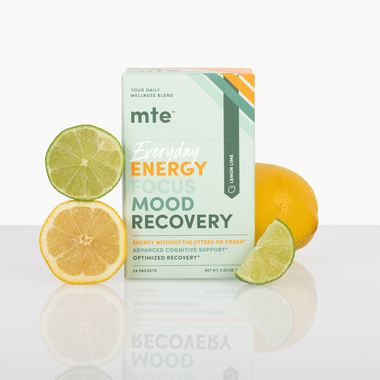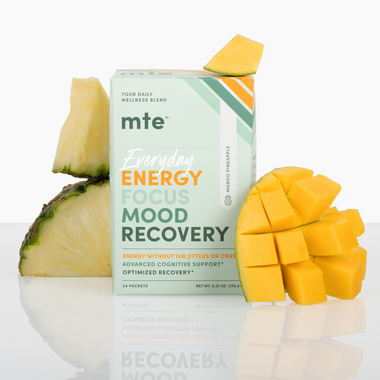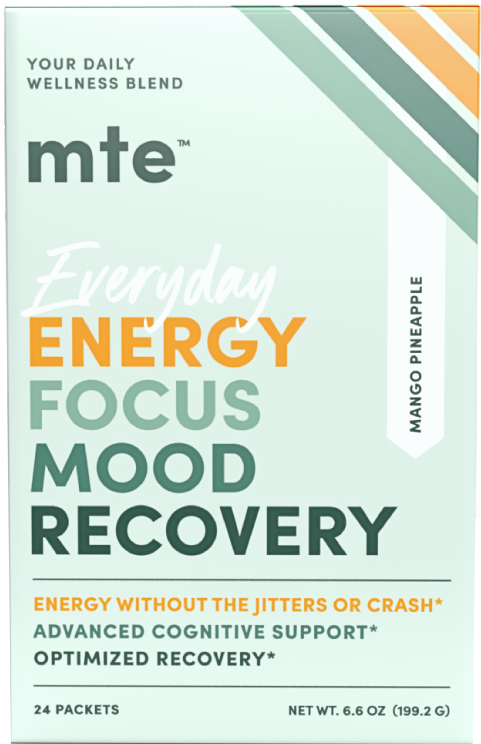
Understanding the Role the HPA Axis Plays in How You Feel
When you’re feeling fatigued, irritable and sleepless, what’s going on inside your body? Or what about joy, relaxation, calm? Believe it or not, the way you feel doesn’t just happen – there are a whole host of processes going on in your brain and body that contribute to that feeling of satisfaction after a run or those feelings of apprehension before a big presentation. And one of the main control centers that deals with those stress reactions is the HPA axis.
HPA stands for hypothalamus-pituitary-adrenal, and is so named as an “axis” because they work in tandem and reciprocally. Their signaling processes are inextricable, and the systems they affect are also interconnected, which is why mood, stress and energy levels often go hand-in-hand – until you intervene with something like coffee or energy drinks.
We're gonna ditch the neuroscience lingo and refer to the HPA as the adaptation axis from here on out to make this article less obnoxious.
Okay. So then, how is this adaptation axis supposed to work? And what’s happening when you add caffeine to the mix? Let’s discuss:
The Adaptation Axis & the Human Stress Response
Perhaps the most well-known function of these brain centers is stress response. This axis was vital to human evolution, as it’s required for stress adaptation. So, what happens when you perceive a stressor? Say you’ve run into an ex unexpectedly on the street. There’s no time to get away – they saw you. In less than a second or two:
- The amygdala received the stimulus, interprets it and decides it’s danger. It sends a distress signal to the hypothalamus.
- The hypothalamus is the control center for the following cascade of events by communicating with the sympathetic nervous system – the one that controls involuntary movements and processes. The hypothalamus relays the distress signal through the nervous system.
- Glands that secrete stress-response hormones flood the bloodstream with excitatory chemicals, which redirects all available resources (oxygen, glucose, energy, etc.) to the body’s vital systems and muscles.
- The heartbeat rises, alertness is at an all-time high – this is the end of the nearly-instantaneous physiological changes that give you that stomache-drop feeling. Your body’s telling you it’s a fight-flight-freeze situation.
Now, what happens when this stressor stays for more than this initial danger moment that was signaled? Say your ex has the audacity to walk up to you and start a conversation, instead of just waving and going away. This is where the adaptation axis takes over:
- When the initial mega-dose of stress-triggered energy starts to wane, the hypothalamus will try to keep the sympathetic nervous system in that heightened state. It releases a hormone that keeps your fight-flight-freeze mechanism activated and then on guard until the event is over.
- The glands involved in hormone signaling then continuously encourage more and more stress-response chemicals to be produced.
- The amygdala releases a steady supply of stress chemicals into the bloodstream.
- Alertness levels, heightened focus, increased heart rate, etc. all remain until such a time as the stressor leaves.
- Once the stressor is removed, the parasympathetic nervous system takes over to bring everything back down to a normal level of function.
Wondering what happens when this system tries to deal with chronic, long-term stress? Check out our article: Understanding the Dangers and Mechanisms of Chronic Stress.
How the Daily Activity of Your Adaptation Axis Affects Your Mood
Under normal circumstances, the stress signaling by the adaptation axis plays a role in regulation neurotransmitters associated with focus, mood, learning, and stress. But this relationship is also reciprocal. Low levels of feel-good chemicals, associated with low mood, let stress chemicals run wild, further contributing to an irritable exhaustion. On the other hand, an overexcited adaptation axis can reduce activity of feel-good chemicals, contributing to feeling crappy.
The adaptation axis overreacting to stress is associated with several major mood and affect conditions, and is a main treatment target in modern psychiatry. The key is often to support the activity of pro-mood, pro-cognition chemicals, and support GABA activity in tandem. GABA is the body’s calm-down chemical, and is associated with feelings of physical and mental calm.
Why is overactivity of the adaptation axis relevant to mood in general? Because everyone is stressed on a chronic level. What a time to be alive.
The Brain's Role in Your Daily Energy Levels
In theory, a single stress hromone isn’t the absolute wrecker that it has come to be in our modern lives. Cortisol is actually a key neurochemical in your daily energy levels; the adaptation axis uses it to support our sleep/wake cycle by releasing the most in the mornings and gradually reducing release throughout the day. This supports alertness in the daytime hours and calmness at night.
You probably know where this is going. In reality, cortisol is messing our energy levels up. Unless you’re lucky enough to live alone in the woods, you’re likely stressed and tired on a chronic basis like the rest of us. That’s because the adaptation axis feels like it can’t shut down, because your amygdala is saying there’s something there that’s distressing and won’t go away.
The result? Too much external environmental and internal chemical stress all the time, which, among a host of other things, leads to fatigue, problems getting any real kind of rest at night, and generally being an irritable bummer of a person. Everyone knows what it’s like to get up after a long night of tossing, turning and reliving that awful interaction with your ex, getting through the day solely through mainlining coffee the whole time.
Does it work? Technically. Is it really solving anything? Temporarily, maybe.
Are Stimulants Sabotaging Your Body’s Energy Resources?
So now that we know how the adaptation axis works, let’s touch on what happens when you interfere with those neurochemical processes in an unbalanced way. When you consume a bunch of caffeine, you’re affecting three main neurotransmitters that signal:
- I'M TIRED: Blocked
- I'M AWAKE AND READY TO FIGHT SOMEONE: On, full stop
- I'M READY TO TAKE ON THREATS (read: daily life): On, full stop
This article is giving Millennial disenfranchisement, isn't it.
Here’s what we’re missing with caffeine’s abilities: we’ve ignored the feel-good chemicals that are floating around in there! We could use those for energy support, but with caffeine you're just activating stress response mechanisms instead. That’s why an energy drink or quad-shot latte gets you the temporary energy boost you need, but often at the price of feeling even more stressed and more irritable. And when the caffeine runs out, you crash, because what it does is unbalanced and a little dysfunctional.
Effective, sustainable energy boosts that come with a calm, balanced mood need to be just that: balanced. Feeling great is about giving your body the resources it needs to function at its best so it’s able to modulate all those neurochemicals correctly in the first place. Energy shouldn’t come with a price.
MTE: Biohacking Your Body’s Natural Energy Production
Every part of our physical and mental health is interconnected – stress and sleep affect your mood, energy, immunity, focus. And those all-important neurochemicals are the signalers that set states of mind in motion. And when we’re feeling tired, mad and stressed, we reach for energy drinks and coffee, even though we know caffeine is really just covering up the problem.
But there is a better alternative to energy drinks that can replace excessive caffeine and sugar with real support for those chemical processes driven by the adaptation axis. MTE is a greens powder supplement comprised of 13 powerful adaptogens, nootropics and superfoods. Meant as a replacement for energy drinks and excessive caffeine, our formulation promotes good feelings, healthy energy, nighttime recovery, daytime focus, and more.
Free of artificial ingredients and other crappy additives, we rely on clean, scientifically-supported, plant-sourced compounds to hack your brain and body back into homeostasis. Because what good is an energy boost if you’re jittery, irritable and exhausted?
Check out our Ingredients page for more on our formulation, and order your first bag of MTE - your new go-to natural energy drink.






